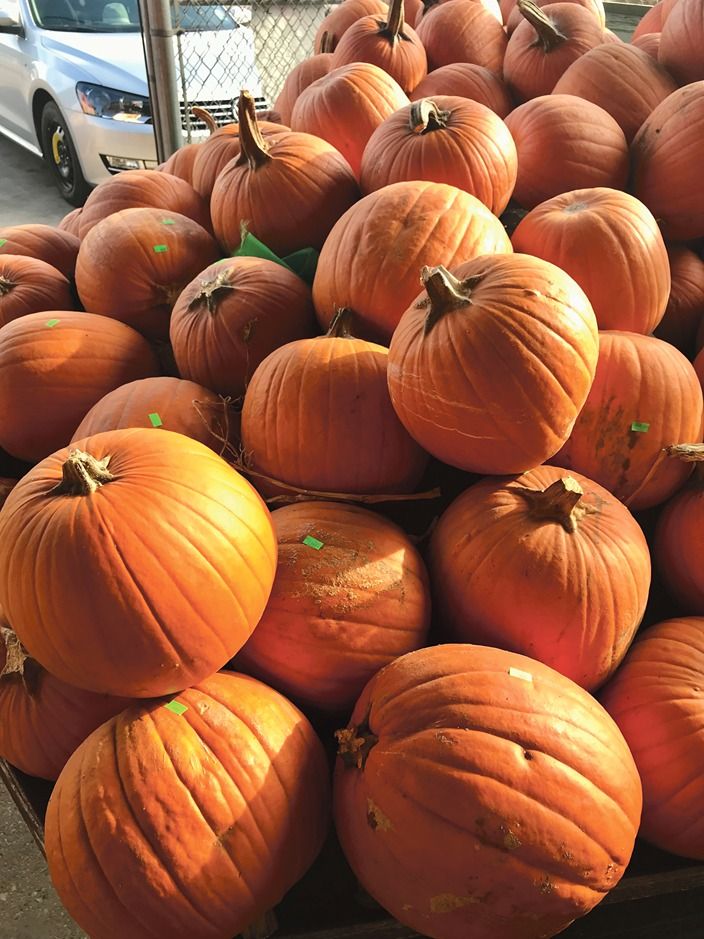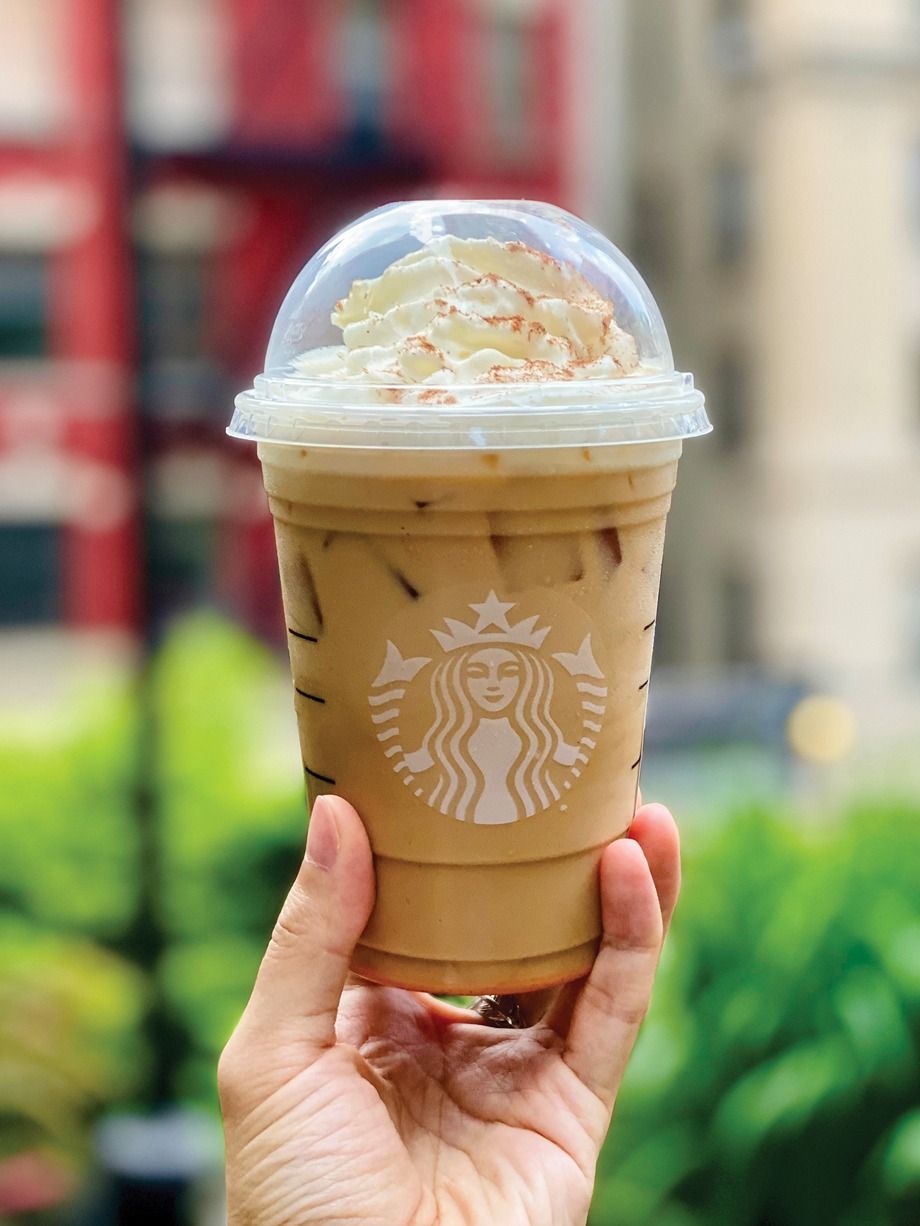Cool weather and pumpkin spice are just what we need to ease into fall.

Pumpkins are gourd-geous, and there's just something about pumpkin spice that makes us fall for it every fall.
Most people gauge when fall has arrived not by the slightly less sweltering weather, not by the sudden darkness at four in the afternoon, but when pumpkin-flavored merchandise starts appearing on the shelves. The ubiquitous gourd lends its taste and odor to an endless range of products.
There's pumpkin spice everything: pumpkin-flavored donuts and dog treats, candy and Kool-Aid, booze and butter. There's pumpkin spice ice cream and iced tea, jelly and Jell-O, Chapstick, Cheerios, and chewing gum. There are even pumpkin-flavored items that have no business being pumpkin-flavored, such as ramen noodles, Spam, Pringles, and hummus.
And, of course, we mustn't forget the world-famous pumpkin spice latte, which really started it all.
All-American Treat
These days, it's hard to separate the pumpkin from its spice. "Pumpkin spice" has become synonymous with pumpkin-flavored, but it wasn't always that way. Long before there were pumpkin spice Pop-Tarts, Twinkies, and all the rest, it used to be—and technically, still is—that pumpkin spice was a separate entity, a spice synthesis used to enhance pumpkin's flavor, rather than merely another name for pumpkin itself.
Pumpkin spice, aka pumpkin pie spice, is a blend of spices that were first united with the express purpose of flavoring pumpkin pie. With cinnamon, ginger, nutmeg, allspice, and, often, mace and cloves, this spice conglomeration has been spicing up pumpkin recipes since as far back as 1675.
The first-ever American cookbook, in 1796, contained a recipe for "pompkin pie," which called for seasoning pumpkin with an early version of pumpkin spice. Today, pumpkin pie ranks as the top Thanksgiving dessert in the country, with over a third of Americans naming it their post-turkey pie of choice.
Libby's first introduced canned pumpkin in 1929 and now produces 85% of the entire world's canned pumpkin supply. Five years later, in 1934, famous spice conglomerate McCormick—the world's largest spice seller—responded by releasing a commercialized version of pumpkin spice.
Pumpkin Spice

Starbucks really put pumpkin spice on the map when they invented their famous namesake latte in 2003. These geniuses of latte lore poured espresso shots over pumpkin pie in various ratios until they perfected the recipe. In 2015, they reunited pumpkin and its spices by adding real pumpkin to the coffee drink. As of last year, Starbucks had sold more than 424 million pumpkin spice lattes globally, at an annual revenue of $80 to $100 million, making it their most popular seasonal drink by far.
Following the invention of the pumpkin spice latte, the pumpkin spice craze spiraled out of control. Pumpkin and its many products now bring in about $600 million a year.
The History of Spices
But the spices that go into that pumpkin spice blend date back thousands of years to the days of the spice trade. Back then, spices had a value and prestige that overshadowed even the pumpkin spice obsession of today. People fought wars, conquered lands, and massacred others to obtain spices. Although you might willingly wait in line over an hour for a pumpkin spice latte, we assume that you've never killed for one.
Nutmeg, perhaps the ringleader of the pumpkin spice mixture, was once used as a treatment for the plague and is still believed to be both a narcotic and a hallucinogen.
The Banda Islands of Indonesia, which were part of the appropriately named Spice Islands, was the only place to find nutmeg in those days. Companies such as the Dutch East India Company sailed there to gather spices—sometimes violently—to sell to eager spice-craving buyers around the world.
They allegedly stole nutmeg trees from the islands, ripping them up by the roots to plant elsewhere. The Dutch also gave up the colony of New Amsterdam (later Manhattan) to the British in exchange for an Indonesian spice-producing island—something of an ironic choice, considering New York City's current pumpkin spice consumption.
People were so nuts for nutmeg back then that in 1300s Europe, the spice held an equivalent value of seven fattened oxen and was more coveted than gold. Cloves, another player in the pumpkin spice game, were a similar extravagance. The British used to pay their dockworkers partially in cloves, and the Roman emperor Constantine the Great gifted the bishop of Rome with 150 pounds of cloves. All of this was perhaps a precursor to the $5.25 price tag of the beloved pumpkin spice latte.
Fun Facts
As for pumpkin itself? This orange, Halloween-friendly fruit of the squash family is native to Mexico and Central America but currently grows on every continent except Antarctica. It is one of the earliest agricultural crops ever grown and comes in hundreds of varieties. The United States produces more than 1.5 billion pounds of pumpkins annually (that's twice the weight of the Empire State Building).
Every single part of the pumpkin is edible, even its stem and leaves, and eating it is very healthy. Pumpkin is low in calories and full of antioxidants, potassium, protein, fiber, and vitamins and minerals. That means that it's good for your eyes, skin, and immune system, and it fights high blood pressure and hearing loss. Every pumpkin has around 500 seeds, which can help ward off prostate problems. Pumpkin was even formerly thought to get rid of freckles and cure snakebites.
The largest pumpkin ever grown weighed in at just over 2,700 pounds (the weight of a female walrus), and the biggest pumpkin pie in history was 20 feet in diameter and weighed 3,699 pounds (about the weight of a 2009 Ford Taurus).
As the potpourri of pumpkin spiciness begins to appear in supermarkets and coffee cups throughout the city, get out and enjoy while you can. Pumpkin spice season only comes once a year.

